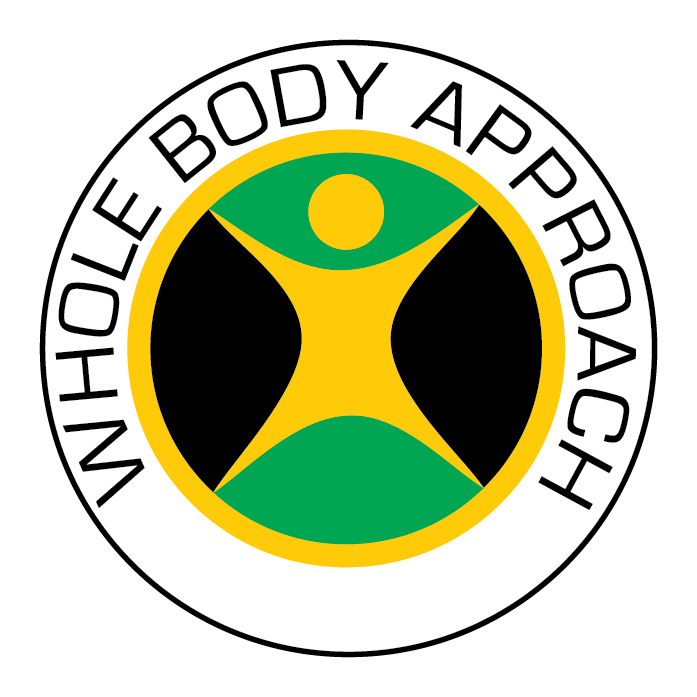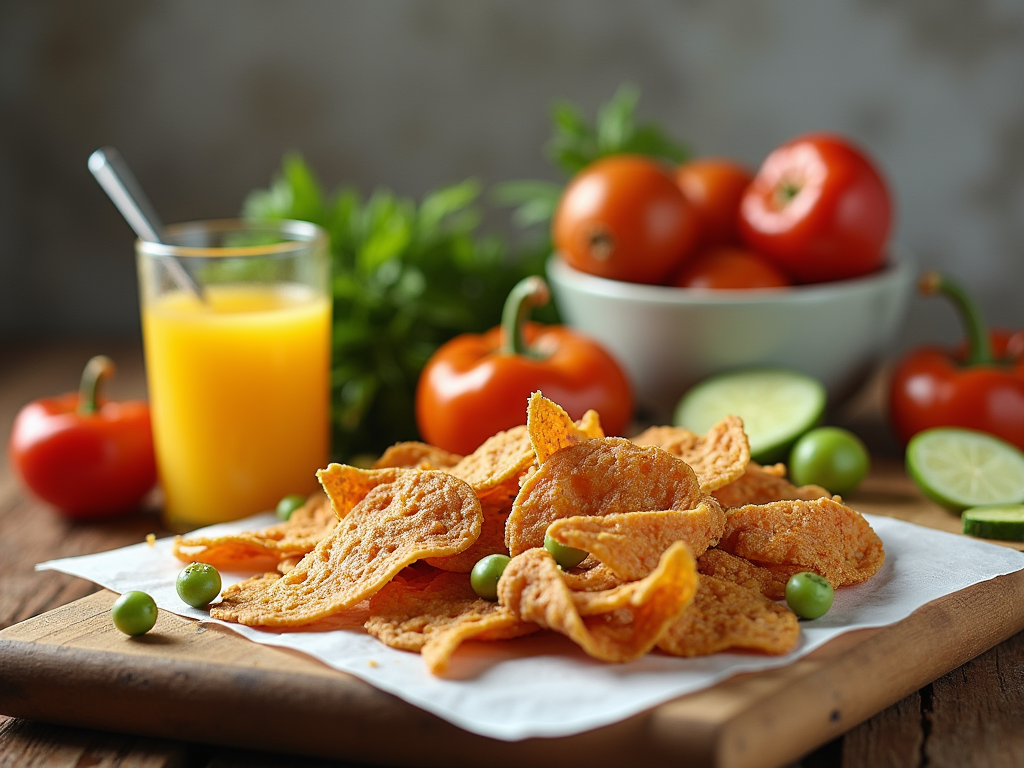Exploring How Visual Cues Influence Food Choice Through Our Five Senses
Hey there, busy parents and active adults! Let’s talk about something we all do daily but rarely think about: how what we see directly shapes what we eat. Whether you’re grabbing a snack between meetings or convincing picky eaters to try broccoli, visual cues play a starring role in food choices. Let’s break down the science—and sprinkle in practical tips—to help you make mindful decisions for your family and fitness goals.
The Power of Visual Cues in Food Choice
How Sight Shapes Flavour
We “eat with our eyes first,” and for good reason. Research shows colour, presentation, and packaging design trigger immediate expectations about taste and quality[1][9]. For example:
Bright red strawberries signal ripeness and sweetness[9]
Muted green veggies might subconsciously register as “bland” to kids[2]
Fast-food logos (think golden arches) activate reward centres in the brain before you even smell fries[3]
A 2024 study found that people choose unhealthy options 27% faster when seeing food images than when reading text descriptions—proof that visuals drive impulsive choices[8].
The Brain’s Role in Food Decisions
Your brain’s inferior frontal gyrus works overtime when you spot food cues, whether consciously aware of them or not[3]. This explains why:
Impulsive snackers gravitate toward fast food (linked to 67% higher visual responsiveness in studies)[4]
Meal preppers who arrange colorful veggies front-and-center eat 40% more greens[5]
Kids presented with rainbow fruit skewers vs. plain bowls consume 2x more fibre [6]
Fast Food Psychology: Why We Crave What We See
Five Senses in Action: The Visual-Taste Connection
Have you ever noticed burger ads always show melted cheese? That’s sensory marketing—using visuals to simulate taste experiences[6]. Key findings:
Golden/crispy textures = perceived freshness (even if food is hours old)[1]
Round plate shapes increase sweetness perception by 18%[7]
Blue plates reduce appetite (hence rare use in restaurants)[9]
Lisa Buchanan’s Nudge Theory: Small Visual Changes, Big Impact
Behavioural scientist Lisa Buchanan emphasises ” choice architecture”—designing environments to guide better decisions[5]. Try these tweaks:
Place fruit bowls at eye level in your fridge
Use smaller plates to control portions without effort
Add herb garnishes to homemade meals (boosts “freshness” perception)[6]
3 Visual Hacks Ahead of 99% of Parents
The “Rainbow Challenge”
Let kids build colourful plates with red peppers, orange carrots, and purple grapes. Studies show this increases veggie intake by 33%[2][7].Outsmart Fast-Food Triggers
Cover takeout menus with DIY recipe cards. Visual reminders of home cooking reduce cravings by 41%[4].Meal-Prep Magic
Store snacks in clear containers with bold labels. When the labels are visible, families eat 25% more nuts/seeds [5].
Give Difficult Feedback to Your Environment
Reshape Your Food Spaces
Problem: Pantries packed with processed snacks in flashy wrappers
Solution: Dedicate a shelf to ”instant win” visuals—washed berries, yoghurt cups, and nuts in mason jars
Science: People reach for the first item they see 73% of the time[1][8]
Conclusion: See Better, Eat Better
Visual cues aren’t just marketing tricks—they’re tools you can reclaim. By understanding how colour, layout, and presentation hijack our senses, you’ll make choices aligned with energy goals and family health. Start small: rearrange one shelf, plate one meal artfully, and notice how your brain responds.
FAQ: Your Visual Food Choice Questions Answered
Q: What’s the #1 visual cue to avoid?
A: Red-and-yellow colour combos (familiar in fast food) increase hunger signals by 19%[9].
Q: How do I counter sugary cereal ads targeting my kids?
A: Create a ” superhero breakfast” chart with photos of oatmeal/fruit. Visual familiarity reduces resistance by 28%[6].
Q: Can plate colour affect weight loss?
A: Yes! Using blue plates led to 22% smaller portions in a 2024 study[9].
Q: How do I make veggies look as appealing as fries?
A: Roast with olive oil for a glossy texture, and serve in a colourful bowl. Crispy visuals boost consumption by 37%[7].
Hungry for more? Swap just one visual trigger this week—notice how your five senses (and waistline) respond! 🥗
Citations: [1] https://pmc.ncbi.nlm.nih.gov/articles/PMC7763580/ [2] https://studyrocket.co.uk/revision/gcse-food-preparation-and-nutrition-wjec/cooking-and-food-prepraration/how-sensory-perception-guides-the-choices-that-people-make [3] https://www.jpost.com/food-recipes/article-730990 [4] https://pubmed.ncbi.nlm.nih.gov/26095434/ [5] http://essay.utwente.nl/94630/ [6] https://studenttheses.uu.nl/bitstream/handle/20.500.12932/26450/Antheunisse,%20C.pdf?sequence=2 [7] https://pubmed.ncbi.nlm.nih.gov/24411766/ [8] https://www.mdpi.com/2072-6643/16/19/3343 [9] https://www.cnslab.co.uk/blog/post/unlocking-the-science-of-eating-how-sight-sound-and-smell-shape-your-food-experience.html [10] https://www.mdpi.com/2072-6643/12/4/1062 [11] https://www.researchgate.net/publication/344750643_Visual_Design_Cues_Impacting_Food_Choice_A_Review_and_Future_Research_Agenda [12] https://deepblue.lib.umich.edu/bitstream/handle/2027.42/166275/arcp1069.pdf?sequence=2 [13] https://www.news-medical.net/news/20230111/Visual-food-cues-can-affect-eating-behavior-even-when-you-are-not-aware.aspx [14] https://www.mdpi.com/2304-8158/9/10/1495 [15] https://neurosciencenews.com/eating-behavior-visual-food-cues-22210/ [16] https://www.researchgate.net/publication/347583134_How_Visuals_Affect_Food_Choice [17] https://www.researchgate.net/publication/45649904_The_Importance_of_visual_cues_for_food_consumption_and_satiety [18] https://www.semanticscholar.org/paper/Visual-Design-Cues-Impacting-Food-Choice:-A-Review-Vermeir-Roose/23add25b10f3ce25b1c1e187fbd9fc5c92225fbc [19] https://onlinelibrary.wiley.com/doi/full/10.1038/oby.2002.15 [20] https://www.tandfonline.com/doi/full/10.1080/02739615.2013.842462 [21] https://news.harvard.edu/gazette/story/2024/09/why-do-we-crave-junk-food-diet-psychology/ [22] https://pubmed.ncbi.nlm.nih.gov/39344179/ [23] https://pmc.ncbi.nlm.nih.gov/articles/PMC11013654/ [24] https://pmc.ncbi.nlm.nih.gov/articles/PMC11167869/ [25] https://etd.ohiolink.edu/acprod/odb_etd/ws/send_file/send?accession=toledo1353034670&disposition=inline [26] https://evidence.nihr.ac.uk/alert/what-influences-young-peoples-food-choices/ [27] https://health.clevelandclinic.org/eating-habits-and-the-psychology-of-food [28] https://learndojo.org/a-level/aqa-psychology/eating-behaviour/ [29] https://pmc.ncbi.nlm.nih.gov/articles/PMC10261035/ [30] https://journals.sagepub.com/doi/10.1177/21582440221086604 [31] https://www.jstor.org/stable/41062259 [32] https://dornsife.usc.edu/news/stories/fast-food-choices-revealed-by-smartphone-data/ [33] https://brandwell.ai/blog/lsi-keywords/ [34] https://www.researchgate.net/publication/339823511_Fast_and_automated_sensory_analysis_Using_natural_language_processing_for_descriptive_lexicon_development [35] https://cpas-egypt.com/elements-of-semantic-analysis-in-nlp/ [36] https://sigmanutrition.com/episode499/ [37] https://www.researchgate.net/publication/352061393_Post_Covid-19_Attitude_of_Consumers_Towards_Processed_Food_-_a_Study_Based_on_Natural_Language_Processing [38] https://pmc.ncbi.nlm.nih.gov/articles/PMC7019941/ [39] https://leadadvisors.com/blog/what-is-lsi-vs-nlps-fully-explained/ [40] https://blog.insightdatascience.com/food-ie-for-thought-using-nlp-to-find-familiar-meals-at-new-restaurants-ff9cd2bd46f6 [41] https://pmc.ncbi.nlm.nih.gov/articles/PMC4843770/ [42] https://digitalguider.com/blog/lsi-keywords/ [43] https://www.notsalmon.com/2023/08/24/10-nlp-phrases-to-stop-food-cravings-from-a-wellness-expert/ [44] https://repository.uwl.ac.uk/id/eprint/12218/1/foods-13-02290.pdf [45] http://www.foodandnutritionjournal.org/volume12number2/narrative-review-on-the-factors-affecting-fast-food-consumption-among-adults/ [46] https://www.secondnature.io/guides/nutrition/cant-stop-eating-junk-food [47] https://www.nutritional-psychology.org/what-effect-does-junk-food-have-on-cognitive-behavioral-processes-and-how-will-interoceptive-awareness-ia-play-a-role-in-helping-us-to-stop-craving/ [48] https://www.nutritionsociety.org/2018/05/determinants-takeaway-and-fast-food-consumption [49] https://intermountainhealthcare.org/blogs/fast-food-depression-link [50] https://www.medicalnewstoday.com/articles/324847 [51] https://www.bbc.com/future/article/20211206-does-seeing-food-on-social-media-make-us-eat-more [52] https://globalnlptraining.com/simply/nlp-technique-for-the-right-food-choice-weight-loss-coaching/ [53] https://chemrxiv.org/engage/chemrxiv/article-details/66096d9666c138172957c264 [54] https://gwizlearning.wordpress.com/2012/12/16/making-smart-eating-choices-using-nlp/ [55] https://tastewise.io/blog/what-on-earth-is-nlp [56] https://edepot.wur.nl/583318 [57] https://www.reddit.com/r/LanguageTechnology/comments/i1lafp/how_can_i_use_nlp_to_extract_the_main_food_word/ [58] https://www.abbyeagle.com/nlp-coaching-resources/what-is-food.php

